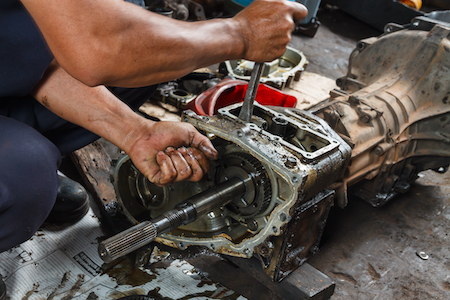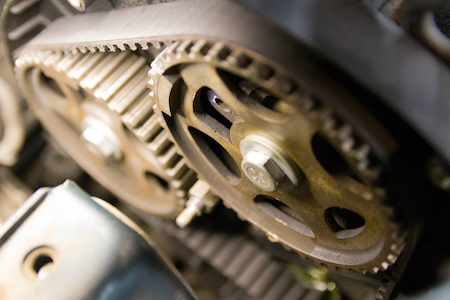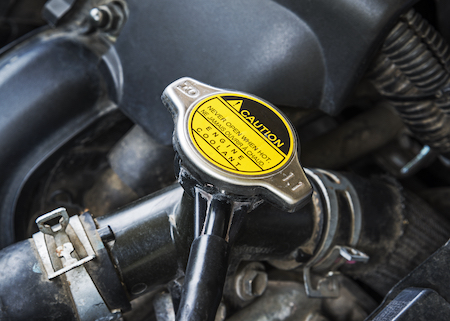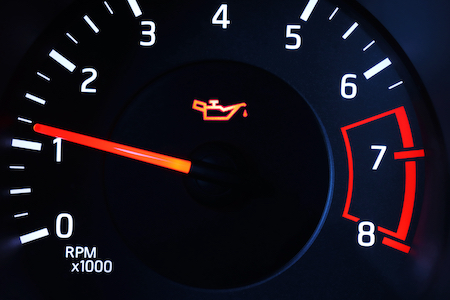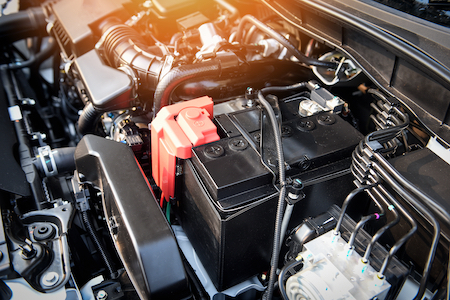Here in Colorado, summer seems to stick around a little longer in the year. September is beautiful. We can stay outside doing what we love longer, hiking, walking, or biking to enjoy the color all around us.
Yet there’s a hint of coolness in the air. The temperatures are falling. Is your car’s heater ready for winter?
The heater isn’t something most of us test until we need it. We get up one morning to find cold temperatures, possibly snow on the ground. Then we turn the heat on and expect it to work, providing us with the heat we need to keep the inside passenger compartment comfortable.
Where does the warm air come from?
As your car’s engine heats up, it warms up the antifreeze that circulates from the radiator to the engine. Two rubber heater hoses also circulate from the engine to the heater core, which is a small box that sits behind the dashboard. Heated antifreeze moves through one hose into the box, while another takes it back to the engine compartment.
When you turn the heater on, air blows through this heater core. It’s warmed up, and moves through the vents and into the passenger cabin. Some vehicles work by having a heater valve that controls the flow of antifreeze through the heater core, turning it on or off based on your selection. Other vehicles control the amount of air that flows into the air blend box, and how much is passed directly over the heater core.
Once you understand how heat moves from the engine compartment into your passenger area, it’s easier to understand how the amount of heat you have is a telltale sign of potential problems underneath the hood. If a problem exists with the radiator, for instance, it can also impact the way the heater core works. If you have an antifreeze leak, it can lower the quality of coolant in the system, which can clog up the flow from the radiator and thermostat, which causes the thermostat to fail, and so on.
The problem may be with your cooling system
Think of antifreeze (coolant) as the lifeblood of your car’s engine. If it’s not in optimal condition, it can’t perform its job. Antifreeze is designed to regulate the temperature inside the engine compartment, as well as keep it safe from freezing-cold temperatures. If antifreeze is in good condition, it circulates properly, the engine functions, and you can control the inside cabin to your liking. The heater relies on the circulation of antifreeze to ensure proper temperatures, and to be able to release as much heat as you desire into the cabin. If the cooling system isn’t working well, then your vents won’t blow warm air.
A leaking heater core can start small and grow exponentially in short order. You may first notice an antifreeze leak by a sweet smell coming from your vents. You can’t miss the sweetness. It may also be combined with vapor coming out the vents, causing a buildup of film on the inside of the windows. This is a hazardous material, so it’s important to get it fixed immediately. Another sign may be a leak on your driveway. Depending on which antifreeze you use, it could have a pinkish or greenish tint. A leak is a clear indicator your car doesn’t have the proper amount of coolant inside the system. Without fixing it, your vehicle is in danger of overheating, which almost always means your car will break down.
Listen for the blower
When you turn on the heating system, you have the ability to set it at different levels, depending on how warm you choose to make the inside air. The blower is designed to pump conditioned air through the vents at varying speeds. Over time, this electric blower motor can wear out, which weakens its ability to send air flow into the interior cabin. As temperatures start to dip, it’s a good idea to test out the blower motor before you need heat. As you drive around, test out the varying levels, from low to high. Listen for unusual noises that could indicate something is wrong with the blower. Clunking, grinding, squealing, or metal-on-metal sounds are all indicators of a problem with the blower motor. This gives you ample time to get it fixed before the first snowstorm of the season arrives.
Your air conditioner is also an indicator
If you’ve ever thought your heating and cooling system were two separate entities, think again. Your car’s heating system actually uses the air conditioner to help dry out moist air, which is needed to help you defrost your windshield and side windows before and as you drive. You might not think to turn on your air conditioning system when it’s already below freezing outside, but a functioning air conditioning unit is integral for driving in Colorado weather.
Have you noticed problems with the way your air conditioner kept you cool in this unusually good fall weather? Has it been more difficult keeping the interior cabin properly conditioned as the temperatures continue to climb outside? That’s your car’s way of telling you to pull in for a little maintenance before the winter begins. A functioning air conditioner is the only way to survive the winter drive.
Are you ready for another Colorado winter?
The good news is that it’s easy to ensure your car heater is in good working condition and ready for another Colorado winter. Periodic maintenance of your cooling system will ensure you can keep the interior of your car at whatever temperature you desire, while knowing at the same time your engine is running optimally too.
Auto manufacturers recommend changing your coolant after 4 years or 60,000 miles, and every 2 years or 30,000 miles after that. Be sure to check your owner’s manual for complete advice based on your make and model.
This ensures your coolant is powerful enough to keep your engine system working as designed, and gives mechanics a chance to repair any leaks and inspect the various components for signs of breakdown.
Is your car heater ready for winter?


